Community farming initiatives play a vital role in enhancing urban life by improving food access and fostering community engagement. Through cooperative models and the support of dedicated nonprofits, these initiatives create resilient local food systems that address the unique needs of urban residents while promoting sustainability and economic development.
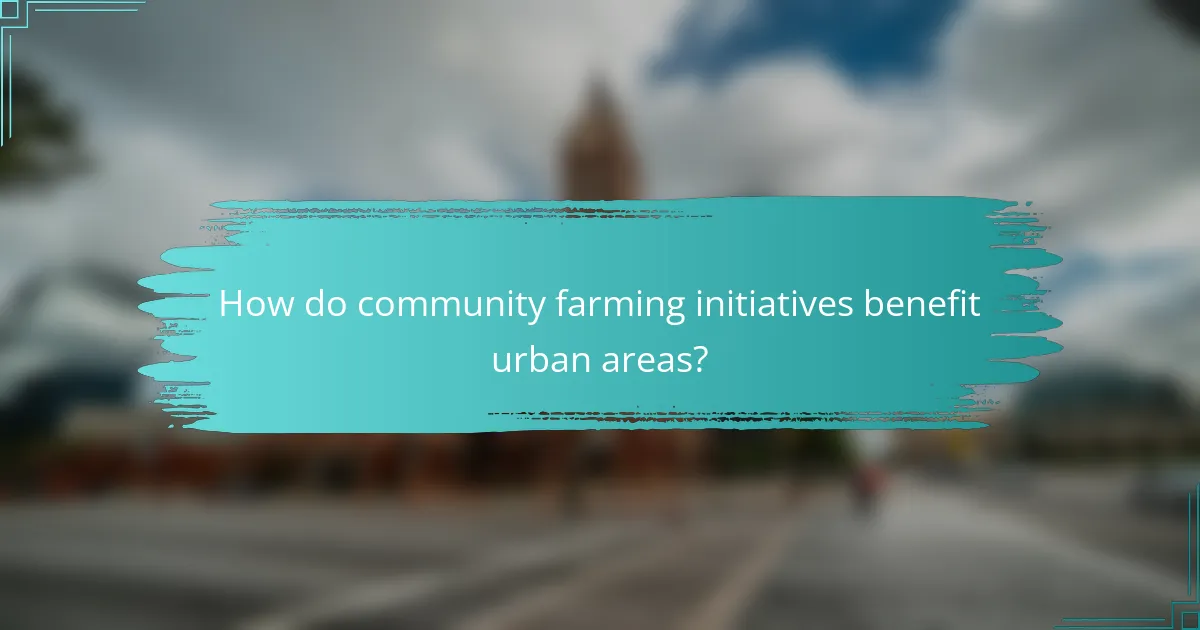
How do community farming initiatives benefit urban areas?
Community farming initiatives provide significant advantages to urban areas by improving food access, fostering community engagement, promoting environmental sustainability, and driving economic development. These initiatives create local food systems that are more resilient and responsive to the needs of urban residents.
Improved food access
Community farming initiatives enhance food access by providing fresh produce directly to urban residents, often in areas with limited grocery options. Urban gardens and cooperatives can reduce food deserts, making fruits and vegetables more available and affordable.
For example, community-supported agriculture (CSA) programs allow residents to purchase shares of local farms, ensuring a steady supply of seasonal produce. This model not only supports local farmers but also encourages healthier eating habits among participants.
Enhanced community engagement
These farming initiatives foster a sense of community by bringing people together to work towards common goals. Participants often collaborate on planting, harvesting, and maintaining gardens, which builds social ties and strengthens neighborhood bonds.
Workshops and events hosted by community farms can educate residents about gardening, nutrition, and sustainability, further enhancing engagement. This shared experience can lead to increased civic participation and a stronger community identity.
Environmental sustainability
Community farming initiatives contribute to environmental sustainability by promoting local food production, which reduces transportation emissions and encourages biodiversity. Urban gardens can improve air quality and reduce urban heat effects through increased green spaces.
Practices such as organic farming, composting, and permaculture techniques are often employed in these initiatives, minimizing chemical use and enhancing soil health. This approach not only benefits the environment but also educates participants on sustainable practices.
Economic development
Community farming can stimulate local economies by creating jobs and supporting local businesses. Urban farms often hire local residents, providing employment opportunities in areas with high unemployment rates.
Additionally, these initiatives can attract tourism and local investment, as urban gardens and markets become community hubs. By keeping food dollars within the community, they help circulate wealth and support local economies.
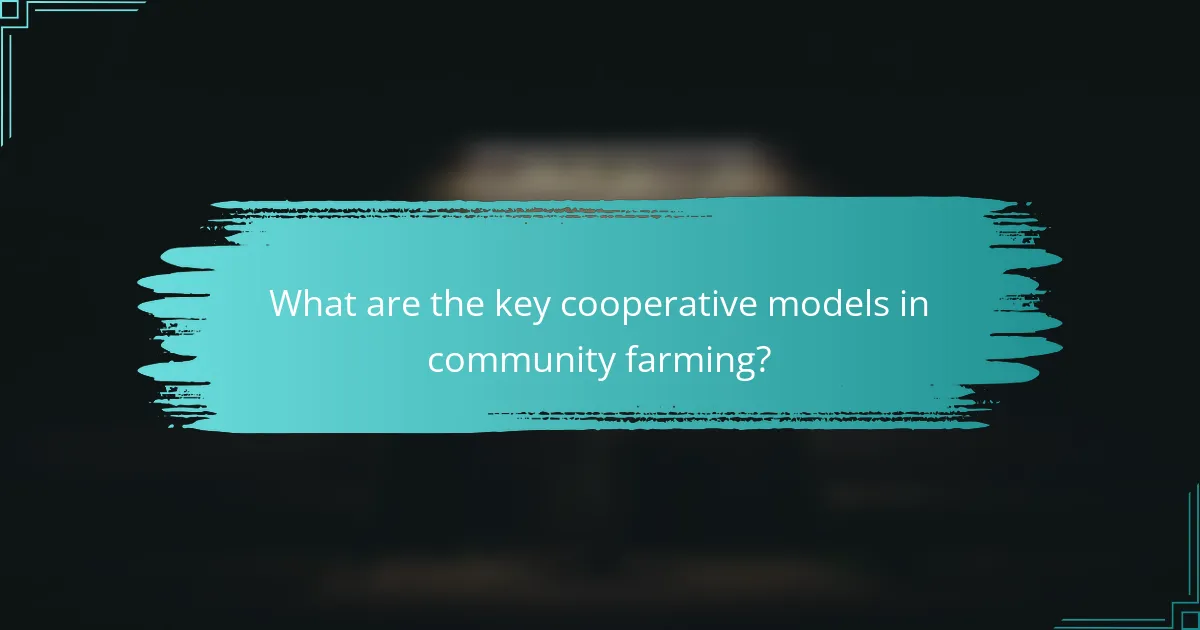
What are the key cooperative models in community farming?
Key cooperative models in community farming include worker cooperatives, consumer cooperatives, and multi-stakeholder cooperatives. Each model serves different stakeholders and has unique structures that facilitate collaboration and shared benefits within the community.
Worker cooperatives
Worker cooperatives are owned and operated by the individuals who work in them, allowing members to have a direct say in decision-making and profit-sharing. This model fosters a strong sense of community and accountability among workers, as they are both employees and owners.
In practice, worker cooperatives often focus on equitable wages and working conditions, which can lead to higher job satisfaction and retention rates. Examples include local farms where workers collectively manage operations and share profits, ensuring that everyone benefits from their labor.
Consumer cooperatives
Consumer cooperatives are owned by the customers who purchase goods or services from the cooperative. This model empowers consumers to influence product offerings and pricing, promoting transparency and quality in food sourcing.
In community farming, consumer cooperatives can take the form of community-supported agriculture (CSA) programs, where members pay upfront for a share of the harvest. This arrangement helps farmers secure funding while providing consumers with fresh, locally grown produce throughout the season.
Multi-stakeholder cooperatives
Multi-stakeholder cooperatives involve various stakeholders, including workers, consumers, and sometimes investors or community members, in governance and decision-making. This inclusive model aims to balance the interests of all parties involved, fostering collaboration and shared responsibility.
These cooperatives can be particularly effective in urban farming initiatives, where diverse community needs must be addressed. For instance, a multi-stakeholder cooperative might include local residents, farmers, and local businesses, working together to create sustainable food systems that benefit the entire community.
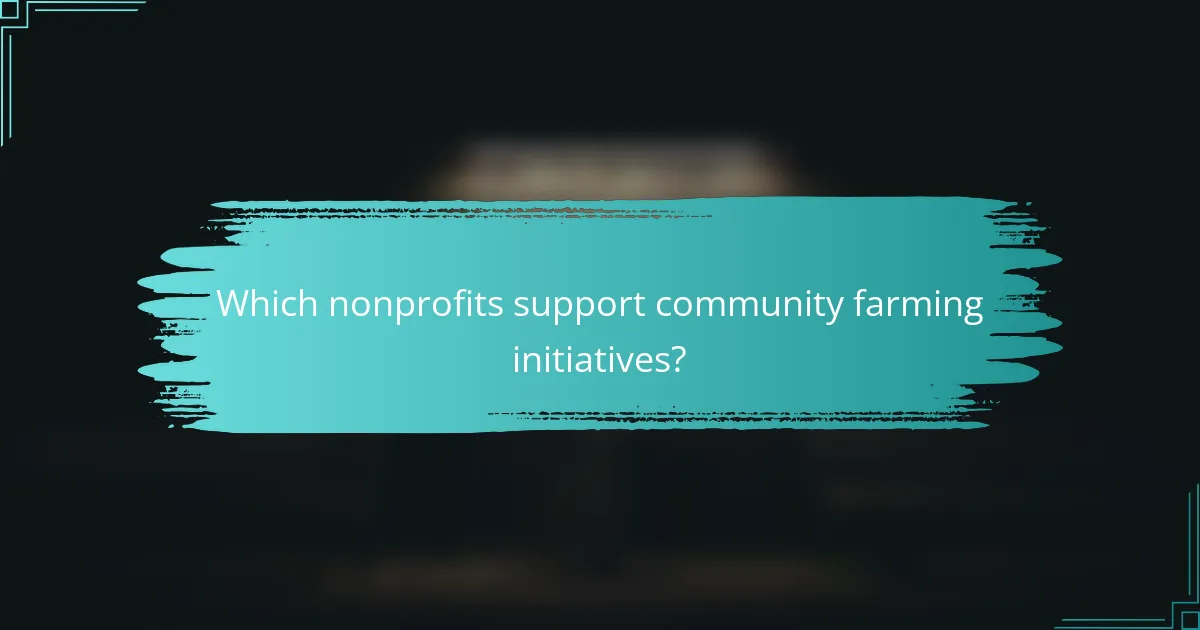
Which nonprofits support community farming initiatives?
Numerous nonprofits are dedicated to supporting community farming initiatives, focusing on urban agriculture, food access, and sustainable practices. These organizations often provide resources, training, and funding to help communities establish and maintain urban gardens and cooperative farming projects.
Urban Farming Institute
The Urban Farming Institute aims to promote urban agriculture as a means to enhance food security and community resilience. They offer training programs that teach individuals how to grow food in urban settings, emphasizing sustainable practices and local food systems.
Participants can engage in hands-on workshops and receive support in developing their own urban gardens. The institute also collaborates with local governments to advocate for policies that support urban farming initiatives.
Green City Force
Green City Force focuses on empowering young adults through green jobs in urban agriculture and sustainability. Their programs provide training in farming techniques, environmental stewardship, and leadership skills, preparing participants for careers in the green economy.
By partnering with local organizations, Green City Force helps establish community gardens and urban farms, creating green spaces that improve neighborhood health and well-being. Their model emphasizes both personal development and community impact.
Community Food Funders
Community Food Funders is dedicated to increasing access to healthy food through funding and support for community-driven food initiatives. They provide grants and resources to nonprofits and community organizations that are working to establish sustainable food systems.
Their funding often supports projects that involve community gardens, food cooperatives, and educational programs about nutrition and food production. By fostering collaboration among various stakeholders, they aim to create a more equitable food landscape.
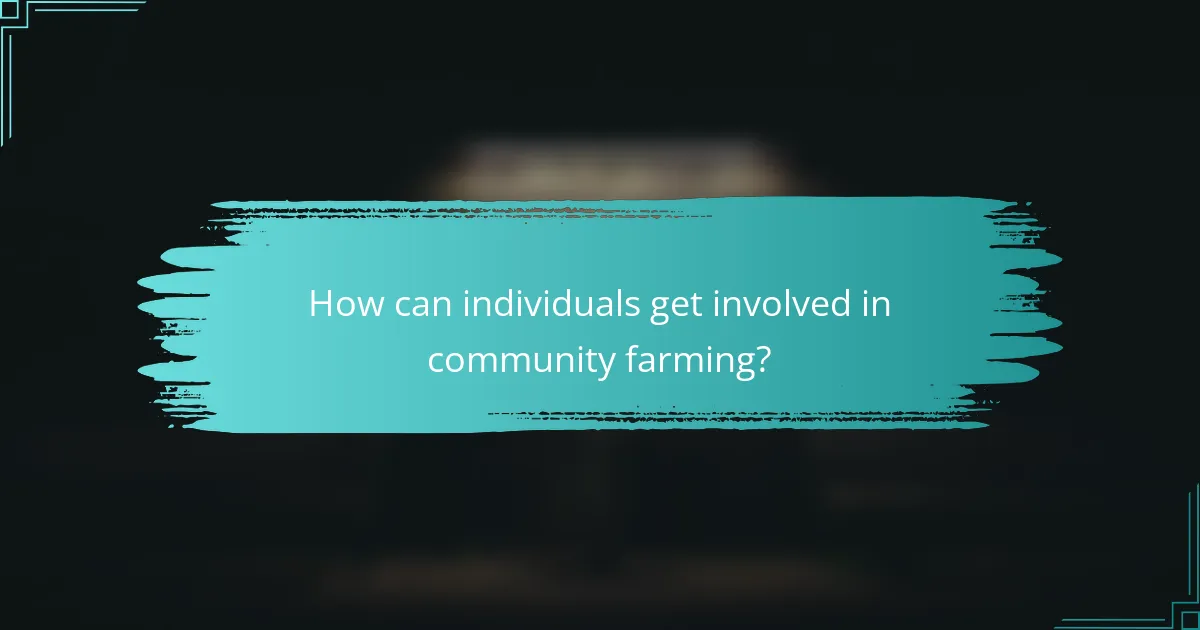
How can individuals get involved in community farming?
Individuals can engage in community farming through various avenues such as joining local urban gardens, volunteering with nonprofits, and participating in workshops. These opportunities not only foster community spirit but also promote sustainable practices and food security.
Joining local urban gardens
Joining local urban gardens is a hands-on way to participate in community farming. Many cities have established community gardens where individuals can rent plots or volunteer to help maintain shared spaces. These gardens often provide fresh produce and a sense of community.
When considering joining, check for membership fees, which can range from nominal amounts to free access, and understand the commitment required for maintenance and participation in garden activities. Look for local gardening groups or city websites for information on available urban gardens.
Volunteering with nonprofits
Volunteering with nonprofits focused on agriculture or food security is another effective way to get involved. Many organizations run community farming initiatives, educational programs, and food distribution efforts. Volunteering can include tasks like planting, harvesting, or organizing events.
To find opportunities, search for local nonprofits that align with your interests. Many organizations welcome volunteers of all skill levels and often provide training. Keep an eye out for specific events or ongoing programs that match your availability.
Participating in workshops
Participating in workshops is an excellent way to learn about community farming practices and connect with others. Workshops can cover a range of topics, from organic gardening techniques to sustainable farming methods. These sessions often provide hands-on experience and valuable resources.
Check local community centers, gardening clubs, or agricultural extensions for upcoming workshops. Many are free or have a small fee, and they can vary in length from a few hours to several weeks. Engaging in these educational opportunities can enhance your skills and deepen your commitment to community farming.
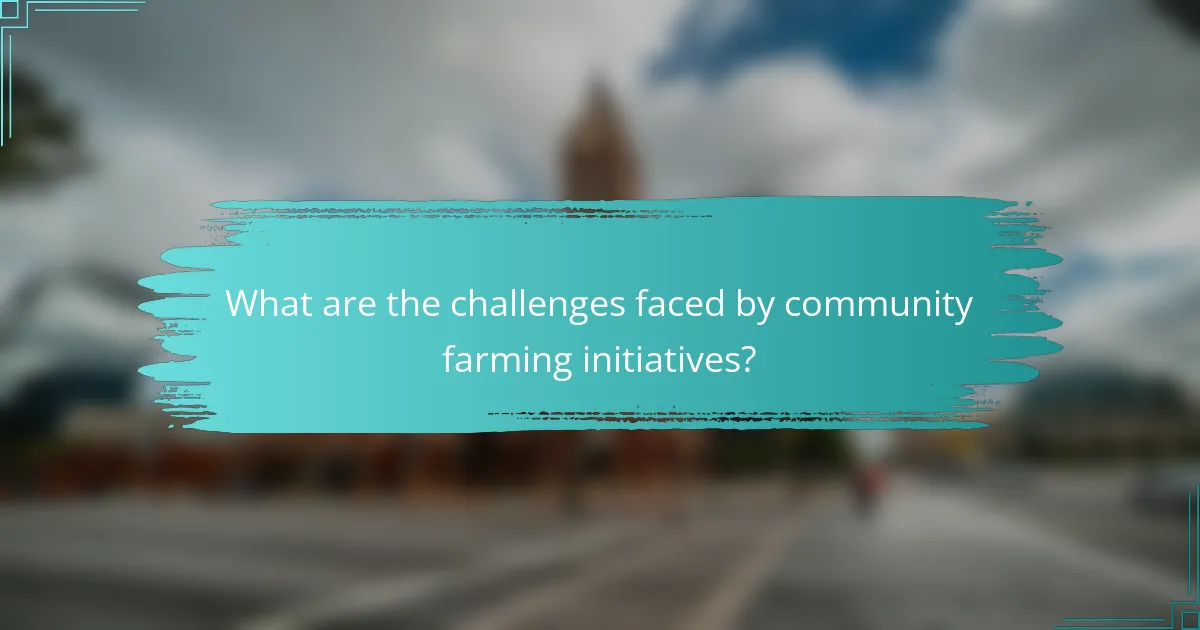
What are the challenges faced by community farming initiatives?
Community farming initiatives often encounter significant challenges that can hinder their success. Key issues include funding limitations, land access problems, and regulatory hurdles that affect their operations and sustainability.
Funding limitations
Funding is a critical challenge for community farming initiatives, often limiting their ability to scale and sustain operations. Many rely on grants, donations, or crowdfunding, which can be unpredictable and insufficient for long-term planning.
To address funding limitations, initiatives should explore diverse revenue streams, such as membership fees, workshops, or selling produce. Establishing partnerships with local businesses or nonprofits can also provide financial support and resources.
Land access issues
Access to land is a significant barrier for community farming projects, especially in urban areas where real estate is expensive and scarce. Many initiatives struggle to secure long-term leases or face zoning regulations that restrict agricultural use.
To overcome land access issues, community farms can seek partnerships with local governments or organizations that own land. Utilizing vacant lots or underused spaces can also be a viable solution, as can advocating for policy changes that support urban agriculture.
